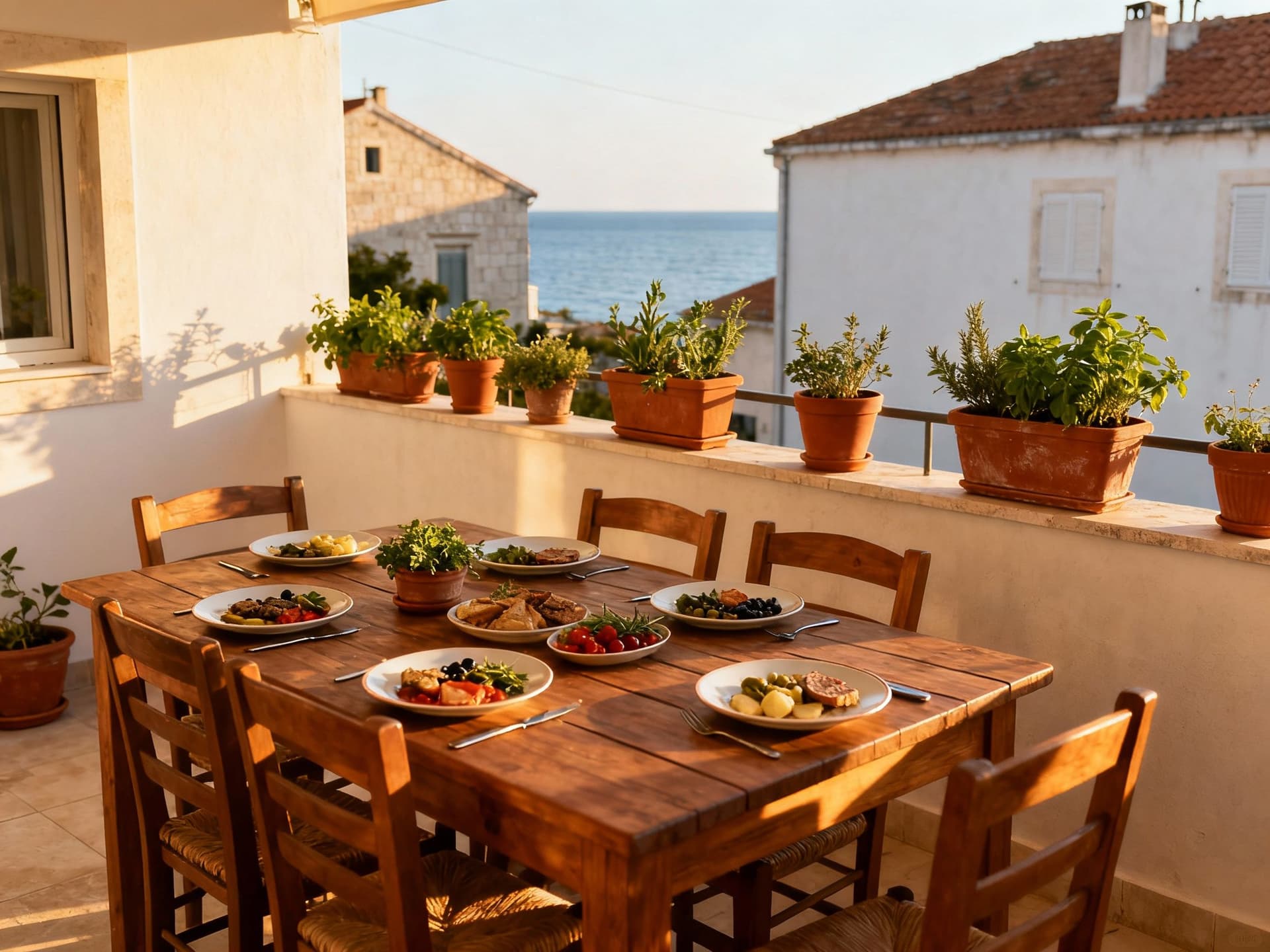Where Croatia’s Yields Beat the Coast
Coastal charm hides wide price dispersion: H1 2025 stats show €2,754/m² average — inland bargains and steadier yields often outperform headline coastal premiums.
Imagine midweek espresso at Split’s Riva, fishermen hauling in octopus at 7am, and a quiet inland village where stone houses sit half the price of the coast. Croatia sells a mood — sun, sea, slow markets — but beneath the postcard there are measurable pockets of value and yield. This guide pairs the lived experience of Croatian towns with data-driven price and yield signals so you can see where lifestyle meets investment logic.
Living the Croatia lifestyle

Croatia moves on coastal rhythms and continental steadiness. Summer crowds concentrate on Dubrovnik, Split and Hvar; Zagreb hums year-round with cafes, universities and business services. Weekends are market days — Pazar stalls in Rijeka and Zadar, bakers and fishmongers offering fresh inventory — while many island communities slow to a whisper outside June–September. For buyers this means choices: tourist-season upside versus inland rental stability.
Spotlight: Dalmatian coast — spectacle and seasonality
Walk Dubrovnik’s old town and you’ll feel why buyers pay premiums: UNESCO charm, tight supply and tourists year after year. But the same popularity drives policy risk — national and local moves to restrict short-term lets aim to free housing for residents and curb price pressure. If you plan a holiday-let strategy, factor in higher taxes and possible permit limits that can compress net yields and increase operational complexity.
Spotlight: Inland Croatia — steadier yield opportunities
Beyond the coast, towns in Slavonia, Zagorje and parts of continental Croatia offer lower entry prices and less seasonal vacancy. The OeNB notes a reduced share of non-resident purchases in Croatia in 2024, signalling a market where local demand matters and yields from long-term rentals can be more predictable. For investors focused on net income rather than peak-season upside, inland markets deserve a second look.
Price and yield reality: what the numbers say

Official statistics show average prices rising but with meaningful dispersion. The national average price per m² for new dwellings reached €2,754 in H1 2025, while Zagreb and coastal hotspots sit materially higher. These headline figures hide variance: new-build coastal units can command €3,500–€6,000/m², while inland offerings may appear under €2,000/m² — and that differential drives yield outcomes.
How to read yield in Croatia (short primer)
Gross yield = (annual rental income ÷ purchase price) × 100. Net yield subtracts taxes, management and maintenance. In Croatia, expect coastal holiday lets to show higher gross yields in summer but higher operating costs and tax exposure; long-term city lets trade lower gross yields but offer steadier occupancy. Use net yield for investment decisions; aim to model both peak-season and off-season scenarios for coastal assets.
Typical yield ranges (illustrative)
Coastal short-term lets: gross 5–7%, net 3–5% (high season dependent).
Zagreb long-term rentals: gross 4–5%, net ~3–4% (stable occupancy).
Inland towns: gross 4–6%, with lower volatility and renovation upside.
Making the move: practical, place-aware steps
Dreams come first — sea views, fresh markets, island afternoons — but turn imagination into a defensible investment with a compact checklist. Start with data (price per m², occupancy, seasonality), layer in local policy risk (short-let rules), and finish with hands-on due diligence: building condition, access, and utility resilience. Combine lifestyle preference with metrics that preserve capital and cash flow.
Property types and what they mean for real life
Seafront apartments sell convenience and nightly rates, but salt, humidity and tourist wear increase maintenance. Historic stone houses deliver character and renovation opportunities — often attracting longer lets off-season — yet require structural checks and insulation upgrades. New-build apartments simplify maintenance but can command a price premium that compresses yields; weigh capex vs operating ease.
Six practical steps to marry lifestyle with yield
1) Map micro-prices: compare price/m² for neighbouring streets, not just the town average. 2) Model seasonality: produce 12-month cashflow with conservative off-season occupancy. 3) Inspect for coastal-specific risks: humidity, drainage and insulation. 4) Confirm short-let permit and tax exposure with municipality records. 5) Factor ongoing management costs (10–20% for holiday lets). 6) Stress-test exit scenarios: resale liquidity varies widely between islands and inland towns.
Insider knowledge: what expats and local agents quietly tell buyers
Expats say the same two things: choose an area where you can see yourself in winter, and build local relationships before you buy. Tourism is growing — 2024 brought record arrivals and rising receipts — which supports holiday-let demand but also sharpens competition. Local agencies who know municipal permitting, landlord-tenant norms and seasonal tenant behaviour save time and mitigate regulatory surprises.
Cultural and seasonal realities that change value
Festival calendars, boat connections and ferry timetables shape occupancy more than glossy listings. In island communities, winter connectivity can drop to a few ferries per day; properties without reliable year-round access are harder to let long-term. Language matters — basic Croatian opens doors to better tenant relationships and trusted tradespeople — and local networks often reveal off-market opportunities.
Red flags locals warn about
Unclear ownership records or disputed boundaries — insist on cadastral extracts and a lawyer. Properties with chronic damp or structural cracks on the coast — budget for substantial remediation. Buildings lacking year-round access (winter ferry gaps, poor roads) — limited liquidity and tenant pool.
Conclusion: Croatia rewards buyers who separate romance from return. If you want sun and short‑term upside, price premiums and regulatory risk come with the package; if you prefer stable income and renovation arbitrage, inland and secondary towns offer stronger yield narratives. Start with the data — price/m², occupancy curves, tax rules — then use local agency expertise to align a property to both your life and your balance sheet.
Swedish financier who guided 150+ families to Spanish title deeds since relocating from Stockholm in 2012, focusing on legal and tax implications.


